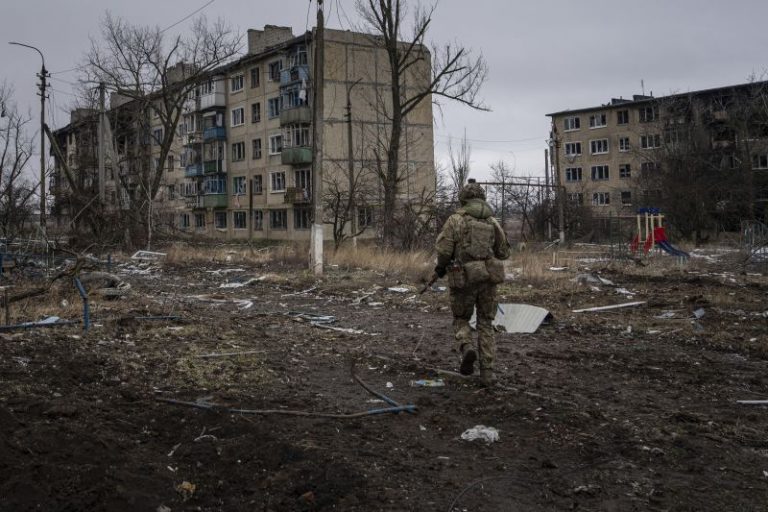Russia has captured the key eastern Ukrainian town of Vuhledar, ending months of resistance and underscoring the scale of Kyiv’s challenge as it heads into its third wartime winter.
Ukraine’s military confirmed its withdrawal from Vuhledar Wednesday, noting Russia had managed to send reserves on the flanks, leading to the “threat of encirclement.” The decision to withdraw, it said, was taken “to save personnel and military equipment.”
A key goal of Russia’s President Vladimir Putin is to take the whole of the eastern Donbas region. Russia has been making incremental gains this year in the east and the loss comes as Ukraine’s President Zelensky returns from a meeting with US President Joe Biden without his key demands met.
Vuhledar, a town built around a coal mine (its name comes from the Ukrainian word for coal), sits some 50km (30 miles) south of Pokrovsk, viewed for the past few months as Russia’s main nexus of attack in the east.
While not a transport and logistics hub like Pokrovsk, Vuhledar was heavily fortified and viewed as a crucial bastion at the intersection of Ukraine’s eastern and southern fronts. One prominent Russian war blogger Boris Rozhin said this made the victory “operational, if not operational-strategic.”
“The fact is that this ‘balcony’ [an apparent reference to Vuhledar’s elevated position] was located at the junction of the Zaporizhzhia and Donetsk fronts posed a constant threat to the grouping that covered the approaches to Mariupol,” he noted, referring to the southern Ukrainian city that has been in Russian hands since 2022.
Just like Avdiivka, another strategic eastern town which fell in February, Vuhledar is a victim, not of Russian strategic prowess, but brute force attrition.
For two years Ukraine had put up a formidable defense there, as Russia tried and failed several times to take the town.
In February 2023, an attempted Russian assault on Vuhledar led to an uproar among pro-Kremlin military bloggers, as hundreds of Russian troops advanced right into the crosshairs of Ukrainian artillery, launched from the town’s high-rise apartment blocks.
Another Russian blogger, Voenkor Kotenok, alluded to this bittersweet victory Tuesday.
“It’s painful, Vuhledar or rather those who settled there, drank a lot of blood,” he said.
Now, it is Ukraine that will face the difficult questions.
A fresh blow to Ukraine
The fact that Russia was able to bring in sufficient reserves to encircle the town underscores the manpower advantage it still has, four months after Ukraine’s mobilisation law came into force.
“I confidently said that one would have to be a moron to allow our guys to be surrounded, but someone did,” wrote Stanislav Buniatov, a Ukrainian soldier and blogger, in a Telegram post. He claimed soldiers ended up withdrawing from Vuhledar in small groups, taking fire from Russian drones, and that the wounded were left “to be shot by the enemy.”
The timing of this loss will also be keenly felt in Kyiv.
It comes less than two months after Ukraine expanded the battlefield to Russia’s Kursk region – a move designed to ease the pressure on other fronts and help reverse Ukrainian fortunes after Russia spent the spring and summer gradually advancing in the east and opening a new front in the northern Kharkiv region.
It’s also just days since Zelensky returned from a politically-charged diplomatic blitz in the US with the promise of new aid, but no NATO-style security guarantees or permission to use Western missiles in Russia.
Just a week ago Zelensky told US network ABC that “we are closer to peace than we think.” The loss of Vuhledar means Ukraine now has to fight to stop Russia advancing further west, making the prospect of retaking territory even more remote.
There has also been no let-up in Russian attacks on Ukrainian energy infrastructure, with the International Energy Agency warning that “this winter will be, by far, its sternest test yet.”


